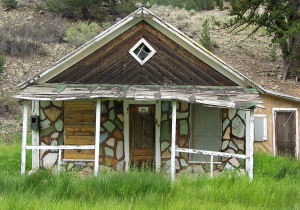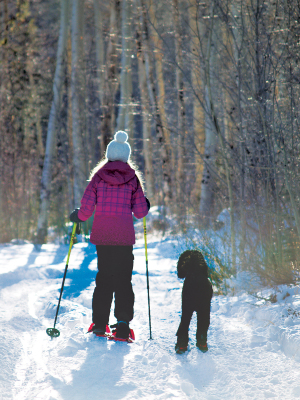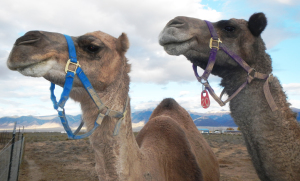by Jane Koerner
The house shakes and groans as the shriek of a locomotive cuts short a fitful sleep. I must be in Kansas, my birthplace, instead of Fairplay, Colorado. I reach for Toto at the foot of the bed. Oh, my! How furry his ears are! How sharp his teeth! And Beast, all 60 pounds of him, crawls onto my belly, trolling for a head scratch. Indoors he is impervious to the wind. But even he loses his equanimity, parking his head between my legs in hopes of turning me around, when we’re hiking up some ridge in the Mosquitoes, reputedly the windiest range in Colorado, in gusts of 50 and 60 miles per hour that bat us around like dust particles.
I moved to Fairplay in the fall of 2011, and I’m still adjusting to the climate. “Nine months, Jane. Nine more months,” Maryann predicted as we watched the Coen brothers’ Fargo on her big screen, while the first storm of the season raged outside. Maryann is an old-timer, and she has been threatening to move back to Chicago for the better part of a decade.
The movie opens with the murder of a highway patrolman and two eyewitnesses. The endless expanse of white where the killings take place resembles our South Park after a snowstorm. Fairplay sits on the mountainous edge. Although it has more trees than South Park, the aspen and bristlecone pine that can tolerate our arid elevation of nearly 10,000 feet afford us scant shelter from the wind. On Hwy. 9, which passes right through town, and Hwy. 285 on the eastern edge, the wind can stoke a snowstorm of a few inches into a whiteout, and disoriented drivers stomp on their brakes, entrusting their fate to the invisible surface of the road. Black ice or windpack – no mercy is shown, and SUVs that intimidate Honda Civic owners like me spin in circles and slide toward catastrophe.
[InContentAdTwo]
If the wind and topography exacerbate the homicide rate in the Coens’ fictional Fargo, are we also at risk? Maryann and I wonder aloud simultaneously. A subsequent tour of the local cemetery proves inconclusive; I find no tombstones that identify the cause of death.
In 1859, the height of the Pikes Peak gold rush, a miner caught out in a storm probably died of exposure. The consequences today can usually be classified as inconvenient. On Nov. 13, 2011, just six weeks after my move, a weather station on Hwy. 285 recorded gusts of 110 miles per hour. Trees toppled, homeowners lost their power for up to three days, roads became impassable until volunteers showed up with chainsaws. I was visiting my parents in Kansas City and was relieved on my return to find unspoiled food in the fridge and my roof still intact. On opening my patio door to inspect my backyard, I encountered a crew of construction workers, collecting debris blown from their work site two blocks away.
“How’d you get in?” I shouted above the cacophony as I gripped the door for support.
“Through your former gate,” the fellow with the fluttering mustache hollered back through cupped hands. The next morning I located the lock and handle on my neighbor’s deck.
I try to be hospitable with my repeat, uninvited guest, but patience wears thin when the guest overstays its welcome. Within a few years of purchasing their dream home in the mountains, some newcomers retreat to lower, less exposed locations.
Like the bristlecones in our yards, the rest of us adapt to adversity with additional layers of clothing and a moderated tempo. When the conditions exceed our definition of tolerable, some of the grizzled natives temporarily relocate to one of the bars in town, where they huddle next to the electric heater or fireplace as the wind whistles through the windows. The story-telling inflates with the increasing velocity of the wind. “My elk carcass is bigger than your garage, and I ruined a pickup bed full of butcher knives quartering and skinning it,” boasted a regular patron, who is 15 years younger than he looks. In the face of a raging giant, perhaps the best defense is to earn a prominent place in local lore.



